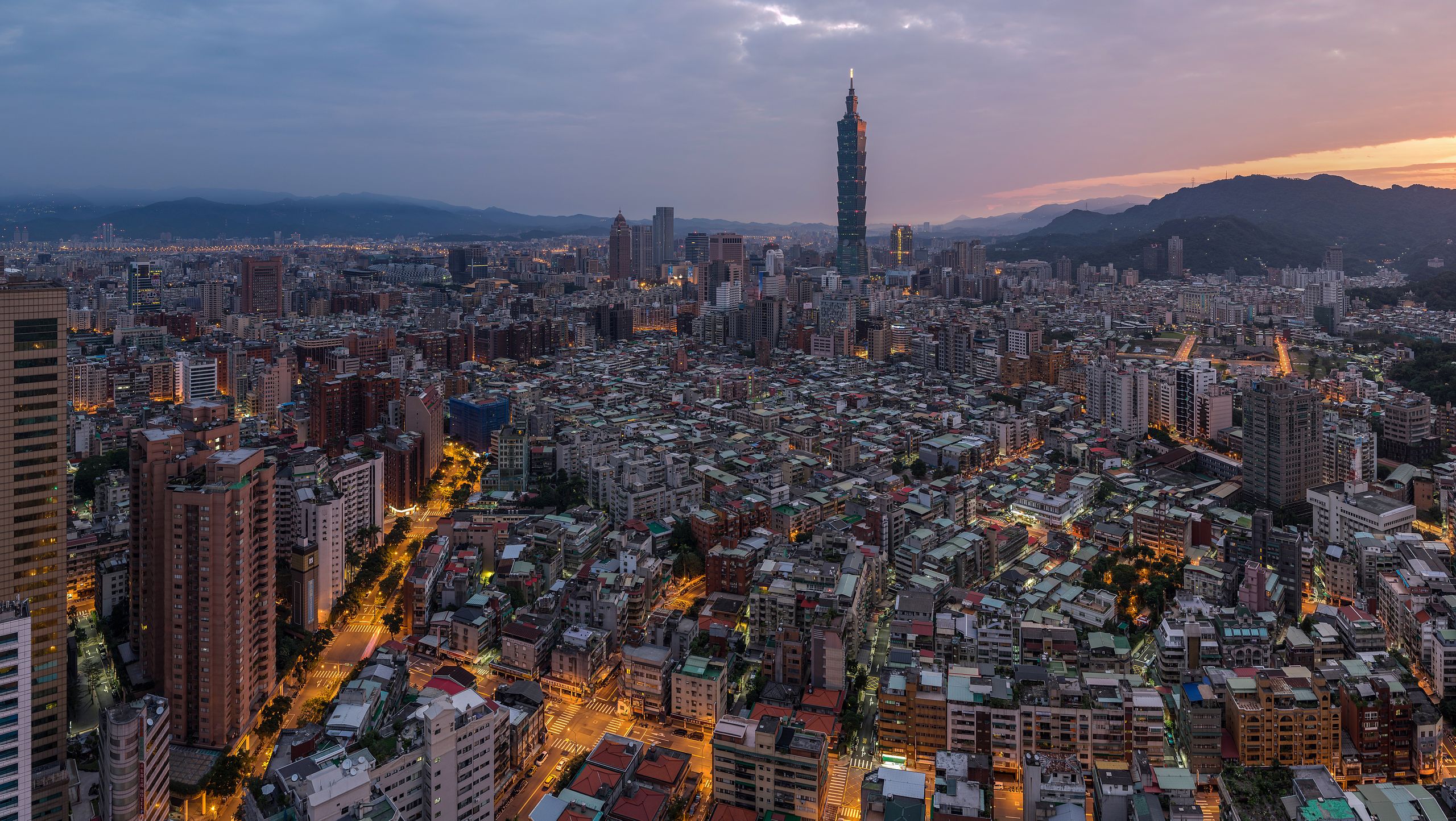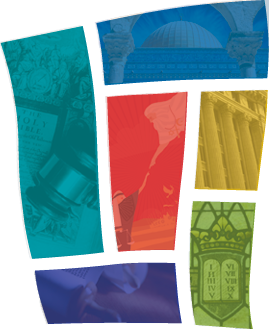
Irreconcilable differences:
Law, Religion, and Taiwan’s relationship with China
André Laliberté
Taipei Sunrise by Chensiyuan (CC BY-SA 4.0).
Historically, laws regarding religion in China and Taiwan differ considerably, and these differences have increased in recent years. Under Xi Jinping’s rule, China seeks to revert to an earlier period of intertwined political and religious authority under the uncontested leadership of the Chinese Communist Party. In contrast, Taiwan is moving toward greater separation between the two sources of authority under a regime based on the rule of law and the primacy of its constitution. In this short essay, I first clarify the notion of intertwined legal-political and religious authority in China. Then I describe how the transition to democracy and the rule of law in Taiwan has led to a separation of political and religious authorities under the aegis of constitutional law. Finally, I show how these different approaches are obstacles in relations between China and Taiwan.
Law and Religion in China: A Deep Intertwining
For at least two millennia, the state has shaped the nature of religious life in Chinese societies by promoting particular forms of worship and determining which religious rituals, beliefs, and institutions were acceptable or not. Many aspects of religious life were so closely embedded with aspects of social life — such as family, work, justice, and politics — that separation of a distinct religious sphere was relevant mostly for monastic orders run by Buddhists or Daoist masters, converts to religions from abroad, and some sectarian movements. State authorities’ relations with religion varied from one dynasty to another. What has remained constant, however, was that no religious institution had successfully managed to overthrow political authority.
The revolutionary fervor of the Republican era from 1911 to 1949 appeared to change this, as religious institutions asserted their autonomy from the state and other social forces. During the brief period in which the Nationalist Party of China (KMT) affirmed its control over the Eastern part of the country, it sought to achieve some control by implementing numerous laws which regulated temples of communal religions.
However, in the absence of a central and universally recognized political power, many factors contributed to the growing autonomy of religious authorities. International connections via missionary activities and official support from influential political leaders who had converted to Christianity gave churches an influence out of proportion to the small size of their flocks. Reformist movements among Buddhists established and reinforced their institutional autonomy vis-a-vis the state. In the absence of oversight from a strong, centralized state, new religious movements flourished, such as the Way of Pervasive Unity, or Yiguandao. In 1947, in the midst of the Civil War, the KMT enacted the Constitution of the Republic of China, whose Article 13 proclaimed that “The People shall have freedom of religious belief.”
In 1949, after the proclamation of the People’s Republic of China (PRC), the Chinese Communist Party (CCP) took time before agreeing on a constitutional provision ensuring freedom of religion. Within a decade, it established comprehensive mechanisms of surveillance and control to solve what it saw as the “religious question.” It recognized only five religions: Buddhism, Daoism, Islam, Catholicism, and Protestant Christianity, and it imposed on each a corporatist structure of governance to facilitate monitoring by the state. This meant that the CCP (as well as provincial and local government authorities) recognized only one national organization of each religion. The CCP expelled foreign missionaries and requested all Protestant denominations to dissolve into the Three-Selves Patriotic Movement (TSPM) of the Protestant Churches in China. The dispute between the Holy See and the leaders of the Catholic Patriotic Association over the nomination of bishops led to a break with Rome. The Buddhist Association of China served as an umbrella organization for Han, Tibetan, and Theravada Schools; and its Daoist counterpart likewise governed its different traditions. In contrast to the other four religions, only Islam was closely intertwined with ethnicity: the regime looked at people registered as Hui, Uyghur, Kazakhs, and five other ethnic minorities as Muslims.
The CCP condemned sectarian religions and redemptive societies and sought their elimination, labeling them as anti-revolutionary societies. It also denied legal status to communal religions, castigating them as feudal traditions. Only those who registered their temples as Buddhist or Taoist places of worship could hope to survive. The legal and corporatist framework of religion imposed by the CCP aimed to reduce the influence of religion in Chinese society. The Cultural Revolution between 1966 and 1976 sought to hasten the eradication of all forms of religion. Ironically, the fervor of the young people supporting the movement, the movement’s devotion to the Little Red Book, and the fanaticism over the unquestioned authority of Mao Zedong evoked a secularized religion.
Not until 1982 did Article 36 of the Constitution guarantee that “Citizens of the PRC have the freedom of religious belief.” Article 36 also states: “Religious bodies and religious affairs are not subject to any foreign domination.” In the same year, the CCP under Deng Xiaoping issued its Basic Viewpoint and Policy on the Religious Question (aka as Document 19), which respected religious freedom in principle. Ostensibly meant to court legitimacy in the international arena, this policy aimed to attract investment from people with Chinese heritage living abroad.
Economic reform policies, however, led to a decline in the social protection hitherto provided by the People’s Commune and the State-Owned Enterprises, generating a climate of social insecurity that coincided with the emergence of new religious movements, such as Falun Gong, in the early 1990s. Under the instructions of CCP General-Secretary Jiang Zemin (1989-2002), the Ministry of Public Security issued a Notice on Several Issues Concerning the Identification and Banning of Cult Organizations against Falun Gong. Falun Gong faces persecution as “evil sects” to this day under that directive. Other important changes in China’s religious landscape under Hu Jintao (2002-2012) and his successor Xi Jinping (2012- ) are the growth of Christianity, and the securitization of Islam. The regime sees both religions as threats because of their international connections. The CCP continues to regulate and monitor all forms of religion.
Law and Religion in Taiwan: Towards Separation
Indigenous populations with different cultures and a variety of religious beliefs have lived for millennia in Taiwan. Chinese migrants started to relocate to Taiwan during the Qing Dynasty, after the latter put an end to the brief presence of Dutch and Spanish trading posts in the Island. These two colonial powers did not leave behind much Christian influence. Instead, Christianity in Taiwan originated with w Presbyterian Church missions from Canada and England, out of which grew the Presbyterian Church in Taiwan (PCT). While it existed on the margin of the Chinese continental empire throughout most of the nineteenth century, Taiwan became a colony according to the terms of the Treaty of Shimonoseki that concluded the Sino-Japanese War of 1894-1895. From that year until 1945, Taiwan was a key colony of the Japanese empire. During that period, the population went through three phases of cultural changes, and experienced a policy of Japanese assimilation under which state-sponsored Shintoism was briefly imposed on the population. After the defeat of Japan, its commanders ceded in the Act of Surrender the control of Taiwan to the Republic of China (ROC). As a result of this act, Taiwan was ruled from Nanjing between 1945 and 1949. After the defeat of the KMT at the hands of the CCP, the ROC government relocated in Taipei, and a mass exodus followed of over one million people from China. For the second time in less than a century, Taiwan experienced another political shift that changed its social, cultural, and religious landscapes. The 1947 Constitution was suspended with the Temporary Provisions Effective During the Period of National Mobilization for Suppression of the Communist Rebellion (hereafter known as the Temporary Provisions), from 1948 to 1991.
Under the rule of Chiang Kai-shek (1950-1975) and his son Chiang Ching-kuo (1978-1988), the KMT enforced an array of directives, regulations, and laws in Taiwan that had been adopted in mainland China — and added new ones to cope with the consequences of Japanese colonial rule, and the cultural specificities of Taiwan’s indigenous people. From the beginning of its rule in Taiwan, the KMT showed the same bias against popular and communal religions that it had expressed before in China. Beyond these policies, however, the KMT attitude towards religion differed from that of the CCP. For one, the KMT recognized a greater number of state-sanctioned religions than the CCP did. Moreover, the KMT maintained relatively good relations with Christian minorities, whether Protestant or Catholic — especially after the country saw a surge of Christian migrants from China following the KMT defeat in 1949. In another contrast to the CCP, the KMT allowed churches to maintain their separate identities, and after the expulsion of Catholic missionaries from the PRC, Taiwan became the seat of the apostolic nunciature for China.
Pragmatic considerations were behind this tolerance towards Christians. The KMT relied on these religions to support the diplomatic status of the ROC internationally. The party highlighted the contrast between religious freedom in Taiwan and the repression experienced in the PRC, and religious charities filled the gaps in the provision of social assistance to orphans, the elderly, and others. Catholic and Protestant churches thus maintained good relations with the government during that period and supported the KMT regime’s hardline position vis-à-vis the CCP. Moreover, the KMT also accepted some new religious movements, such as the Teachings of Heavenly Virtue (Tiandejiao), and the Teachings of the Yellow Emperor (Xuanyuanjiao).
Christian churches’ outsized influence in society was bound to become unsustainable in a society where most people identified with local religions. In 1970, however, relations between the KMT and the PCT deteriorated because the latter belonged to the World Council of Churches, which promoted the entry of the PRC to the United Nations. Even though the PCT followed the KMT directives, tensions between the two remained high following three historical statements issued by the PCT in 1971, 1975, and 1977. These statements supported the people of Taiwan’s human rights, including their rights to self-determination and religious freedom. Meanwhile, the KMT continued to impose a ban on new religions such as Yiguandao and other religions it considered seditious because of their anti-militarist views, such as the Church of the Latter-Day Saints. Throughout that period, however, the KMT never enforced measures like those experienced in China during the Cultural Revolution, which had aimed at a total closure of places of worship.
The situation in Taiwan changed fundamentally during the Presidency of Lee Teng-hui (1988-2000). Under his leadership, the legal recognition of more religions emerged as a goal towards which the secular state should strive. With the support of liberal factions in the KMT and the support of civil society, Lee repealed the Temporary Provisions through six revisions under his presidency, which launched the transition to democracy and ensured the conditions for its consolidation. Lee’s successors have followed his policies, regardless of the party in power.
No government since 2000 has attempted to legislate on religious matters, and the provisions of the Taiwanese Constitution on religious freedom, as part of other basic human rights, has become substantial rather than merely nominal. In Taiwan, the government recognizes and celebrates in its brochures the existence of “folk religion” as part of Taiwan’s intangible heritage. Taiwan also counts many new religious movements that have legal status for tax purposes. Even those who identify with Falun Gong, which is banned in China, can practice in public without fear. This secular regime, which does not enforce a strict separation between religion and state, allows the participation of religions in public affairs. Moreover, it does not adjudicate what constitutes a religion and it does not favor one religion over others. This laissez-faire approach to religion differs from the relatively heavy-handed approach across the Taiwan Strait.
Law and Religion in Cross-strait Relations: United Front Work and Irreconcilable Differences
The differences between the religious landscapes in China and Taiwan were exacerbated when the CCP took power in Beijing, in 1949. As mentioned above, many persecuted Christians sought exile status in Taiwan, where their arrival changed the dynamics within Taiwanese churches. Likewise, followers of some new religious movements, who had supporters within the KMT, also relocated to Taiwan. Devotees of these religious movements opposed the CCP and therefore became staunch supporters of the KMT during the period of martial law. During the brief period of warming relations between China and Taiwan that followed not long after the end of the Cultural Revolution, many Taiwanese, especially the Mainlanders who had migrated to Taiwan after 1945, contributed to the revival of communal religions by funding ancestral temples and shrines.
These religious exchanges, which facilitated person-to-person contacts, went hand in hand with a flow of investments that contributed to China’s early stages of economic growth. When China experienced devastating floods in 1992, Taiwan’s religious presence reached a new stage, with Buddhist associations such as the Tzu Chi Foundation sending volunteers to provide humanitarian relief throughout the country, albeit under surveillance and strict conditions. Even when the official relations between China and Taiwan soured after 1996 because of the CCP’s displeasure with the re-election of President Lee, this informal type of relations continued. Another irritant was the fact that, since 2000, Taiwan offered a haven to the followers of Falun Gong, whose practice was condemned in China. Yet in the same year the CCP, hoping to give substance to the idea of a community of devotees between the two sides, encouraged the pilgrimages across the Taiwan Strait for Mazu, a very popular goddess in Taiwan and Southern China.
Anticipating the possible return of the KMT to power in Taiwan, the CCP resorted in 2007 to United Front work, with a new style of religious diplomacy. When the KMT honorary Chair Lien Chan visited the PRC that year, the CCP and provincial leaders arranged for a ceremony that celebrated the Yellow Emperor, the mythical ancestor of the Chinese people, in a clumsy attempt to promote to the visiting KMT delegation the blood ties between Chinese and Taiwanese. These efforts at rapprochement conveniently glossed over the fundamental differences between China and Taiwan in terms of the respective governments’ relations with religious actors. For the PRC authorities, peaceful relations with Taiwan are conditional on the latter’s renunciation to any claim that it exists as a sovereign and independent state and, accordingly, every social organization in Taiwan that wants exchanges with counterparts in China must abide by this principle.
The situation of Buddhism in Taiwan illustrates the contradictions this can generate. During the period of martial law in Taiwan, the corporatist pretense of the Buddhist Association of the Republic of China (BAROC) to represent all Buddhists in China mirrored the KMT’s claim to represent all of China through its legislators, who hailed from all provinces. This claim was never accepted by the Buddhist Association of China (BAC), whose charter claims that the BAC represents Taiwanese compatriot Buddhists, and the BAROC never wanted to be included in the BAC either. BAROC counted on the support of the international Buddhist associations such as the World Fellowship of Buddhists (WFB), to legitimate its existence internationally. However, the claim of BAROC was undermined from two sides. In Taiwan, many Buddhist associations such as Tzu Chi and Foguangshan have grown in visibility, at the expense of BAROC, which became far less influential. In China, the BAC organized a World Buddhist Forum in 2006 to challenge the claim of BAROC that it represents all Chinese Buddhists. In 2014, as the WFB convened in China, the BAROC was renamed as the Buddhist Association of Taipei. This change of name signaled the renunciation of any identification with Taiwan. Other Taiwanese Buddhist associations maintain an international profile, thereby avoiding the delicate matter of declaring a national allegiance that their devotees may not approve.
In the current context of a turn to a more authoritarian regime in the PRC, the pressure exercised by the CCP for Taiwan to conform to its form of governance in religious affairs is likely to increase and threatens to limit the hard-won religious freedom that Taiwanese enjoy. Conversely, for as long as Taiwan can give substance to this freedom along with all the other ones its regime of rule of law preserve, liberal-minded Chinese may find some form of hope for the future that people with Chinese cultural heritage can develop institutions that promote freedom of conscience. ♦

André Laliberté is Professor of comparative politics at the School of Political Studies at the University of Ottawa, Canada, as well as co-director of the Research Chair in Taiwan Studies. In his research, he emphasizes that East Asian societies have the cultural resources to legitimize the transition to progressive democracies. In his many writings, he has returned to that theme on many occasions by demonstrating that Taiwan provides evidence for that possibility, with the examples of that country’s tolerance for religious diversity, the empowerment of women in parliamentary life, and the civilianization of relations between the government and the military.
Recommended Citation
Laliberté, André. “Irreconcilable differences: Law, religion, and Taiwan’s relationship with China.” Canopy Forum, February 7, 2023. https://canopyforum.org/2023/02/07/irreconcilable-differences-law-religion-and-taiwans-relationship-with-China/

